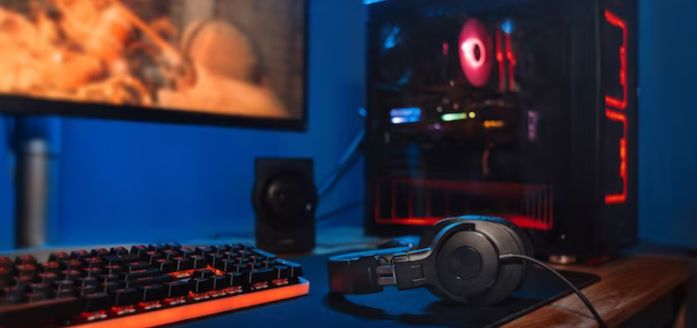Advertisement

Embark on Your Gaming Journey: A Beginner's Guide to Building a Gaming PC
In the world of gaming, having a powerful and customizable gaming PC can elevate your gaming experience to new heights. Building your own gaming PC may seem daunting at first, but with the right guidance and resources, even beginners can embark on this exciting journey. Here's a beginner's guide to building a gaming PC from scratch:
1. Set Your Budget:
Before diving into the world of PC building, it's essential to determine your budget. Gaming PCs can range from budget-friendly builds to high-end gaming rigs, so knowing how much you're willing to spend will help you make informed decisions throughout the process.
2. Research Components:
Familiarize yourself with the essential components of a gaming PC, including the processor (CPU), graphics card (GPU), motherboard, RAM, storage (SSD/HDD), power supply unit (PSU), and case. Research different options within your budget and consider factors such as performance, compatibility, and future upgradeability.
3. Choose Your Components:
Once you've done your research, it's time to select your components. Look for components that offer the best performance for your budget and consider factors such as brand reputation, customer reviews, and warranty coverage. Websites like PCPartPicker can help you create a compatible parts list and compare prices from various retailers.
4. Assemble Your PC:
Building a PC is like putting together a puzzle, but with the right preparation, it's a rewarding and straightforward process. Start by assembling your components outside of the case to ensure compatibility and functionality. Install the CPU, RAM, and CPU cooler onto the motherboard, then mount the motherboard into the case. Install the GPU, storage drives, and PSU, and connect all cables according to the motherboard's manual.
5. Install Operating System and Drivers:
Once your PC is assembled, it's time to install the operating system (such as Windows or Linux) and necessary drivers. Create a bootable USB drive with your chosen operating system and follow the installation prompts. After installing the OS, download and install the latest drivers for your components from the manufacturer's websites to ensure optimal performance.
6. Test and Benchmark:
Before diving into gaming, it's crucial to test your PC for stability and performance. Run stress tests and benchmarks to ensure that all components are functioning properly and that temperatures are within safe limits. Use software like Prime95 for CPU stress testing, FurMark for GPU stress testing, and 3DMark for overall system benchmarking.
7. Optimize and Customize:
Once your PC is up and running, take some time to optimize and customize your gaming experience. Install essential software such as gaming clients (Steam, Origin, etc.), antivirus software, and performance monitoring tools. Customize your PC's appearance with RGB lighting, custom cable management, and themed decals to make it uniquely yours.
8. Join the Community:
Building a gaming PC is not just about the hardware—it's also about the community. Join online forums, subreddits, and social media groups dedicated to PC building and gaming to learn from others, share your experiences, and stay updated on the latest trends and technologies.
In conclusion, building a gaming PC is an exciting and rewarding experience that allows you to customize your gaming setup to suit your preferences and budget. With careful research, planning, and assembly, even beginners can create a powerful gaming rig that delivers an immersive and enjoyable gaming experience. So, roll up your sleeves, gather your components, and embark on your journey into the world of PC gaming!
